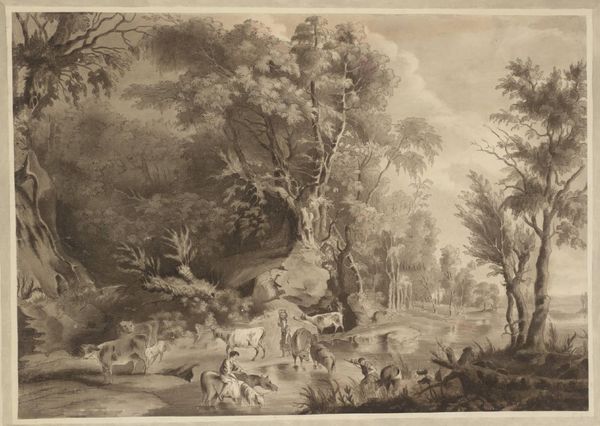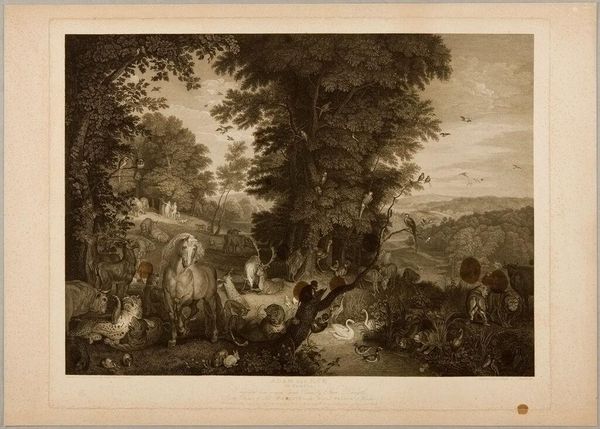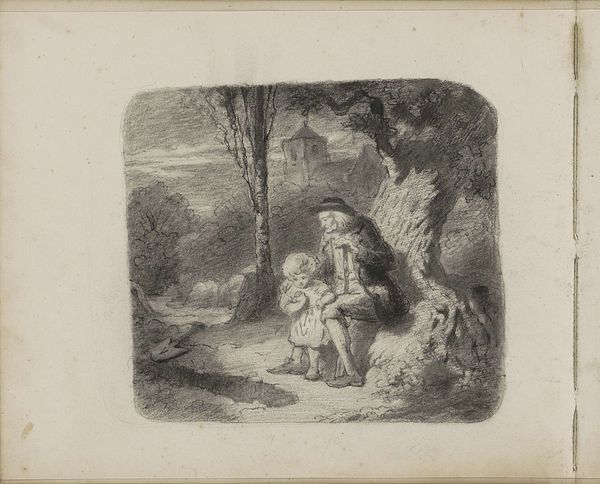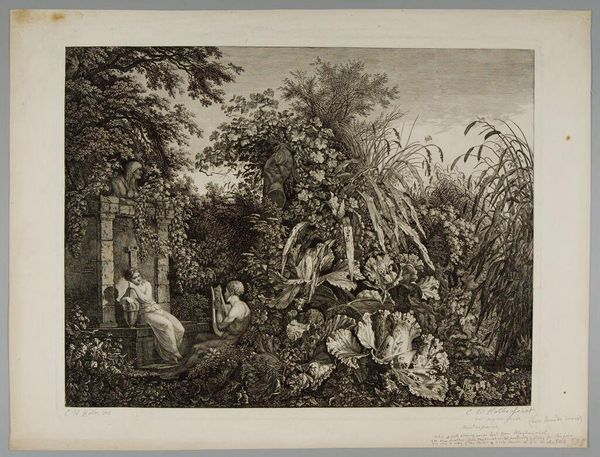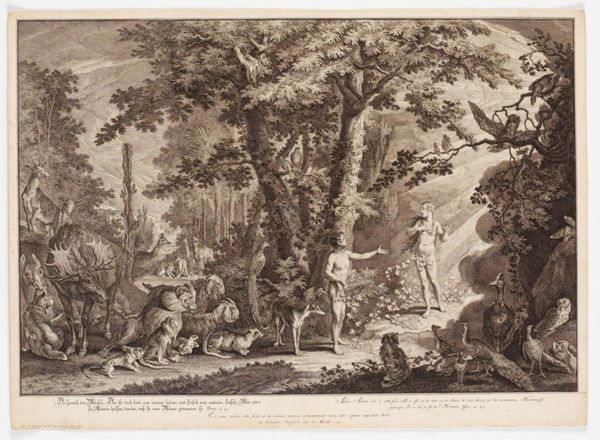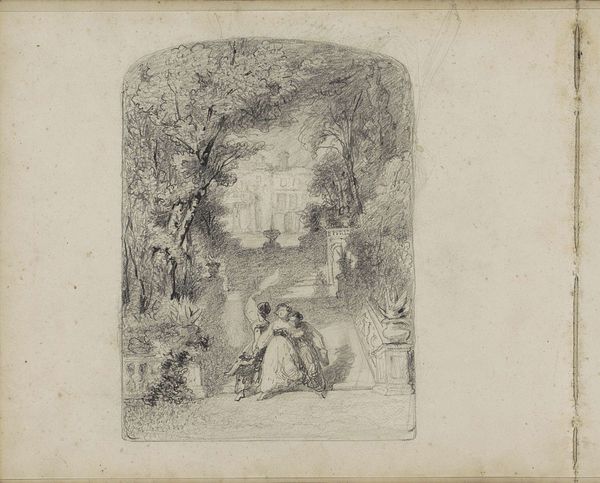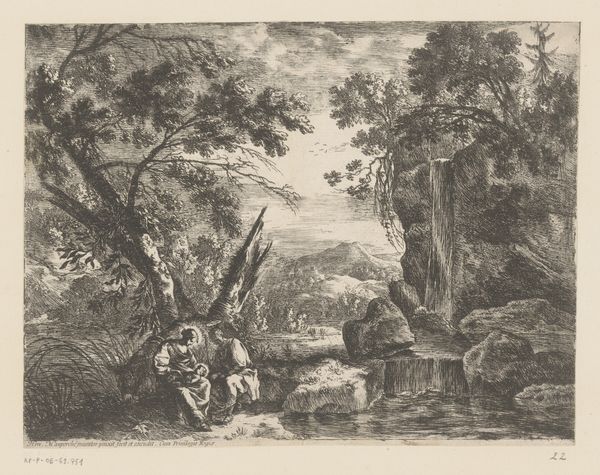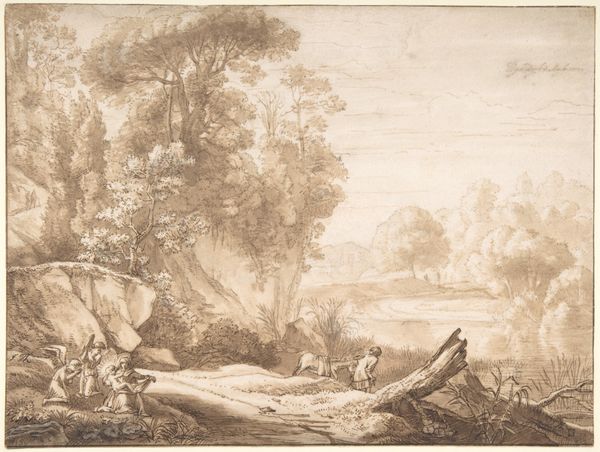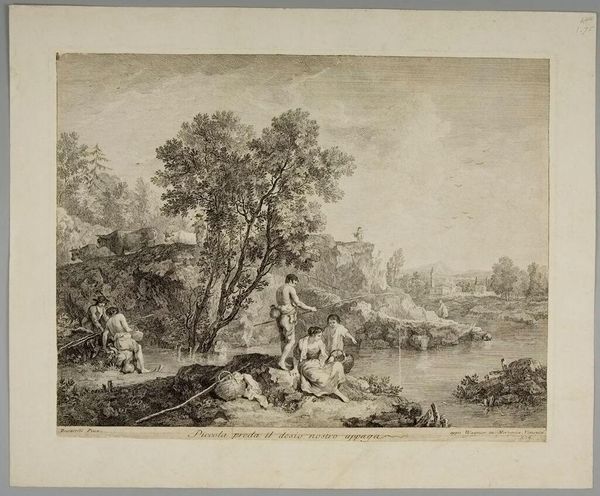
Shepherd and Shepherdess c. 18th century
Copyright: CC0 1.0
Curator: Christian August Günther's "Shepherd and Shepherdess," housed here at the Harvard Art Museums, presents a classical scene rendered in delicate engraving. Editor: It feels immediately idyllic and serene, a retreat into a pastoral fantasy, but there's also a palpable tension in the shepherdess's repose. Curator: Indeed. The artist employs classical motifs—the reclining figures, the surrounding landscape—to evoke themes of Arcadia and idealized simplicity. The shepherd leaning over the shepherdess creates a composition brimming with subtle narrative. Editor: But who has access to this "simple" life? The scene feels loaded, reflecting the gendering and class divisions inherent in such romanticized views of labor and leisure. Curator: I see it more as a timeless exploration of care and connection, using archetypes of the shepherd and shepherdess to convey universal emotions. Editor: Perhaps it's both. The image’s appeal lies in its romantic surface, but its deeper power emerges when we question the social dynamics it presents. Curator: It’s a reminder of how symbols persist, even as their meanings evolve. Editor: Yes, and how critical lenses help us unpack the layers of meaning in art, from the personal to the political.
Comments
No comments
Be the first to comment and join the conversation on the ultimate creative platform.

